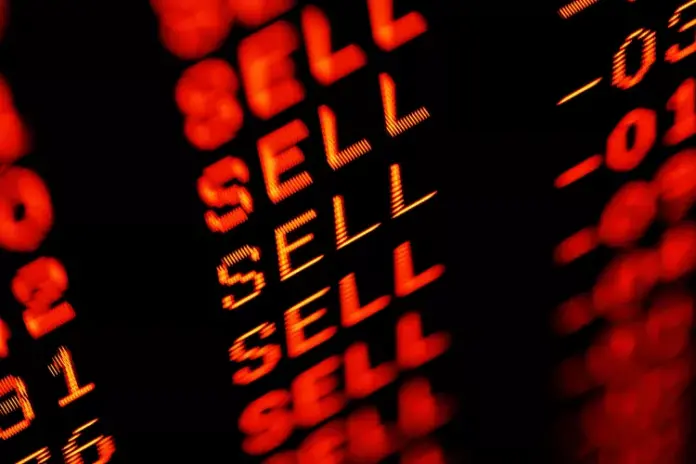Are you also someone who is seeing the Black Monday trend on X right now and wondering what exactly it means? The term’s origin dates back to 1987. The stock market of the US witnessed one of the biggest falls in the history of stock market trade on Monday 19th of October 1987. Some called the stock market crash a blood bath, while others called the day Black Monday. This article brings you the 1987 stock market crash full story along with the reasons that caused the crash back then. The following article will also brief you on why Black Monday is trending on X again and what it means for investors.
1987 Stock Market Crash Full Story: What Happened On October 19, 1987?
October 19th, 1987, known as Black Monday, is etched in the memories of all stock market investors as one of the deadliest stock market crashes in the country. The Dow Jones Industrial Average lost 22.6% in a single day right at the start of the trading week. It not only affects the US markets but also the global economy. It marked the beginning of a global decline and became one of the most notorious days in global financial history. The S&P 500 lost even more of its value than the Dow Jones Industrial Average, witnessing a whopping 30% fall. The day served as a striking wake-up call for the individual investors as well as the Fed, as the crash wiped out gains of several years within hours.
What Caused Black Monday In 1987?
It is important to note that the 1987 stock market crash did not happen because of a single reason. It wasn’t even a result of any particular news event, as there was no major news event released the week prior to Black Monday. However, there were a few reasons that became the cause of mass panic among the investors. The following are a few main reasons that caused the 1987 stock market tragedy.
Also read: Rubio Reacts To Market Crash After Trump Tariffs
Bull Market Correction Overdue
One of the main factors that is believed to have contributed the most to causing Black Monday in 1987 was a strong bull market correction overdue. You can also consider this an early sign of the impending stock market crash. The economy, as well as the stock market diverged towards the bull market for the first time in years. This resulted in valuations climbing to excessive levels, with the overall market’s P/E ratio reaching above 20. A major correction was overdue.
Program Trading
Program trading, also known as automatic trading, served as another one of the major factors that fueled the stock market crisis in 1987. Computerised trading was becoming increasingly popular. Program trading basically had buy or sell orders generated automatically based on the price levels of benchmark indexes or specific stocks. This automatically generated more buy orders when the price was rising and more sell orders when the price was falling. Technology and innovation became one of the main reasons contributing to market volatility in 1987.
Portfolio Insurance
Portfolio Insurance was another one of the program trading strategies that had a major contribution to the 1987 stock market crash. The strategy basically aims to hedge a portfolio of stocks against market risks. This was done through short-selling stock index futures. The strategy resulted in limited potential losses if the stock declined in price. Computerized trading ended up liquidating the stocks as certain loss targets were hit, hence, pushing prices lower.
Triple Witching
The Friday before the stock market crash, the 16th of October 1987, a phenomenon called Triple Witching hit the stock markets. In this phenomenon,f stock options, stock index futures, and stock index options contracts expire simultaneously. The phenomenon ended up increasing the volatility of the market even more on Friday. This resulted in major sell-offs in the after-hours markets causing mass panic among the masses on Monday.
Also read: Trump Treasury Secretary Scott Bessent On Retirement Savings
1987 Stock Market Crash: Impact Of Black Monday
After the market crashed on the 19th of October 1987, the Federal Reserve slashed the interest rates by half a percentage point. This was done in hopes of freeing up capital and encouraging more lending. The Federal Reserve also injected billions of dollars into the economy through quantitative easing. The regulators came up with new protective measures for the prevention of flash crashes due to program trading. Circuit breakers were also introduced after the 1987 crash, leading stock markets to automatically shut down trading in case the price movements were unusual. A 7% and 13% decline results in a 15-minute trading halt, while a 20% decline ends the trading for the day.
Other Stock Market Crashes Since 1987, Black Monday
A number of flash crashes have happened over the years since the 1987 stock market crash. The year 2010 witnessed several moments of volatility, including the stock market flash crashing 9% in minutes. The global economic crisis during COVID-19 also caused a huge fall in the market. Jobless rates alarmingly increased to the highest levels since the Great Depression. This proves how a Black Monday, although rare, is still possible to happen.
Why Is Black Monday Trending Now?
The term Black Monday started trending on X again after experts warned about an impending major crash on Monday, the 7th of April 2025. Friday, the 4th of April 2025, witnessed a major $5 trillion capital wipe-out. On the other hand, key benchmark indices also bore severe losses. Dow Jones futures dropped 1,405 points, which signalled a potential Black Monday, with S&P 500 futures falling 4.3% and Nasdaq-100 futures tumbling 5.4%. As of now, on Monday, the DJIA has already tumbled 2,200 points.








